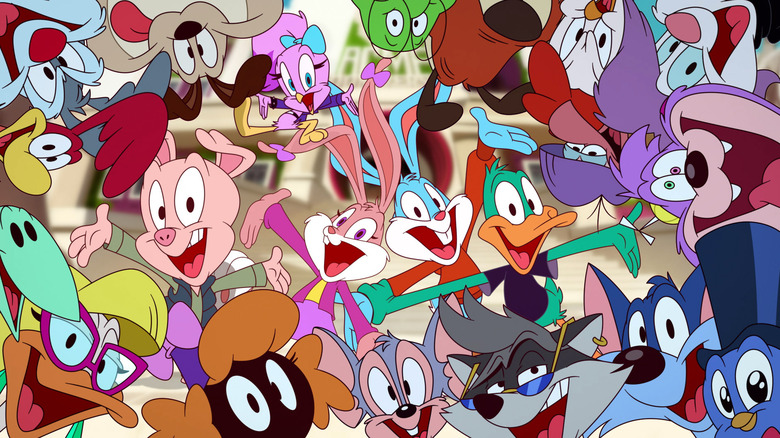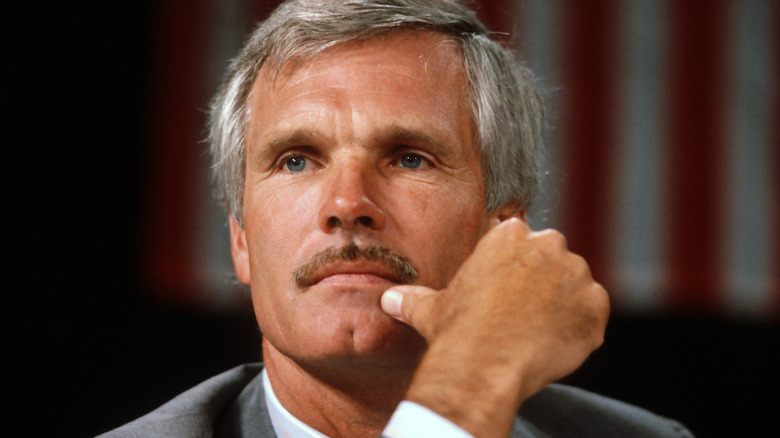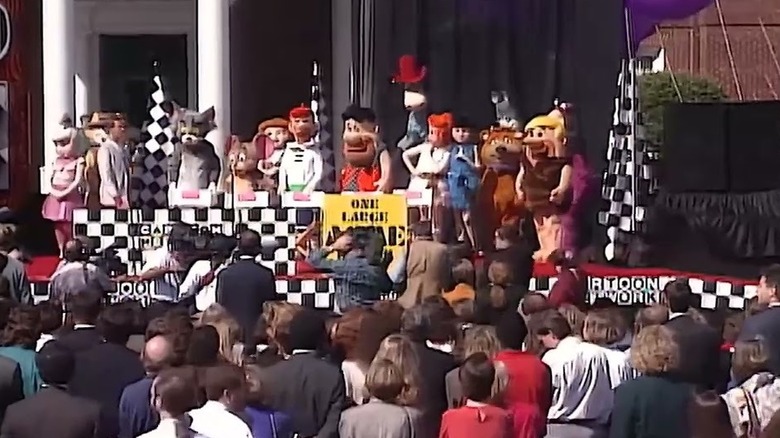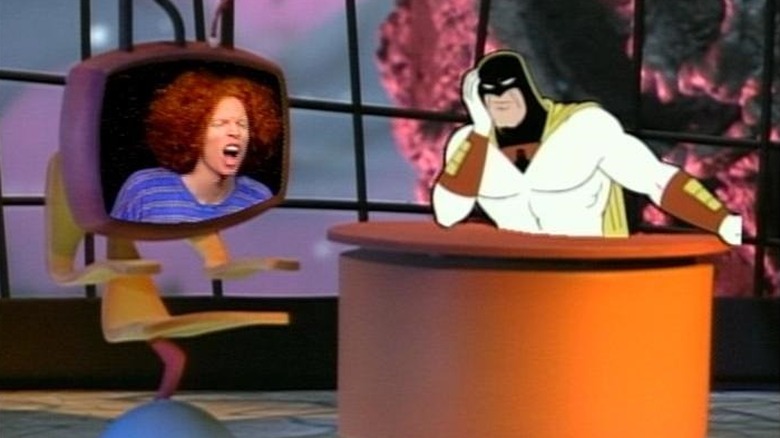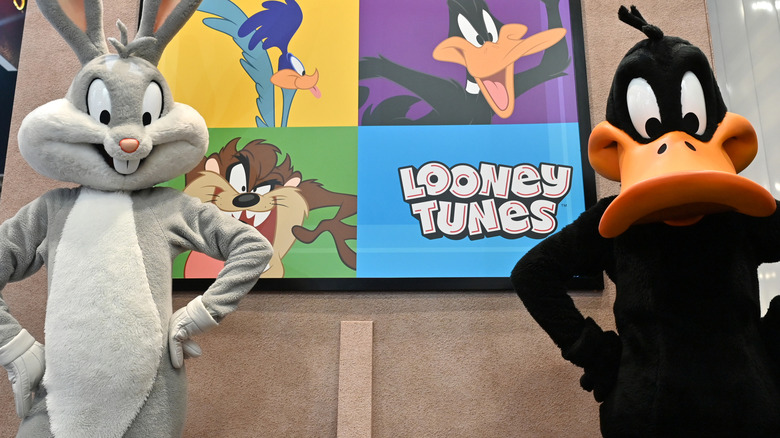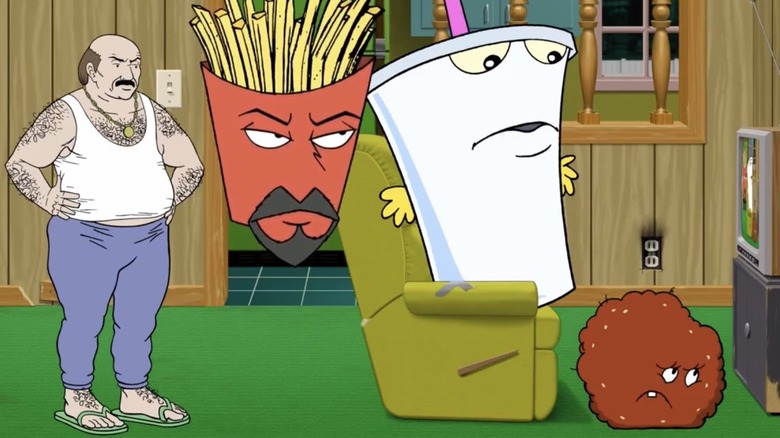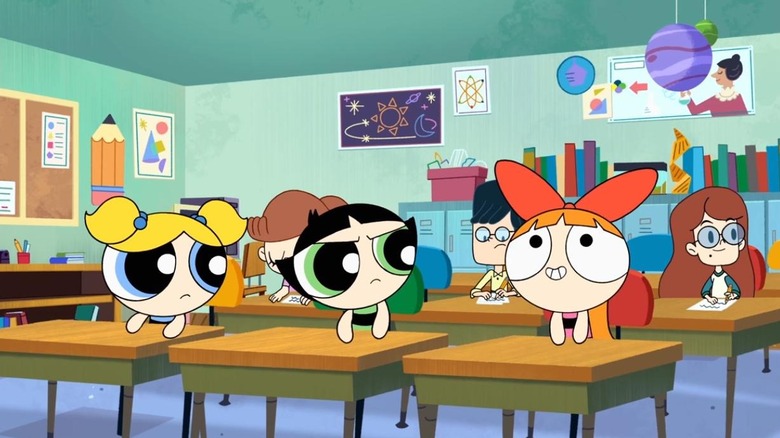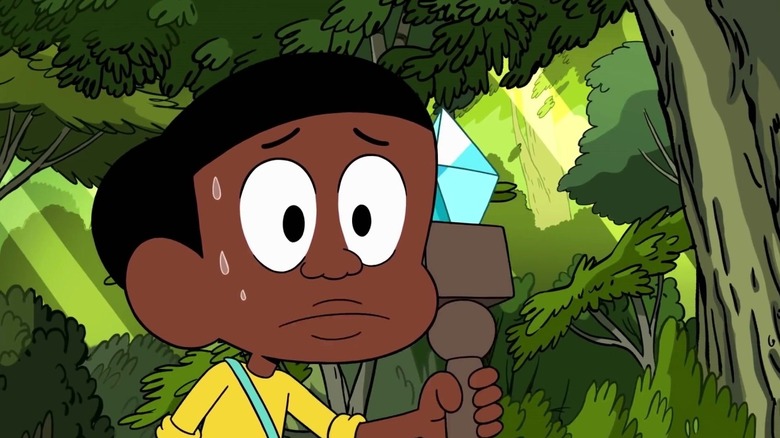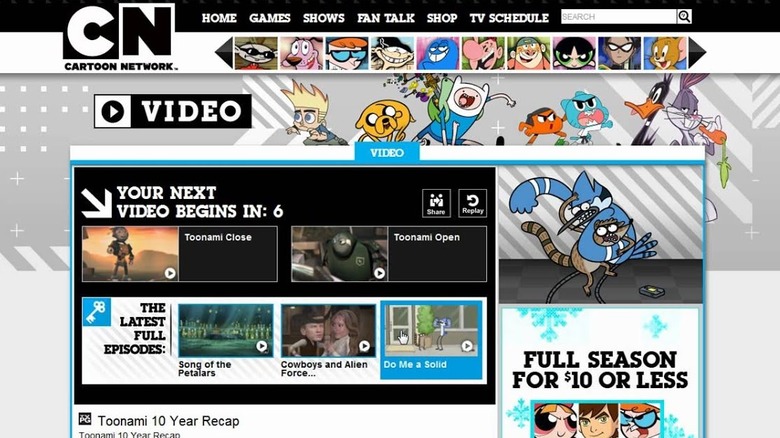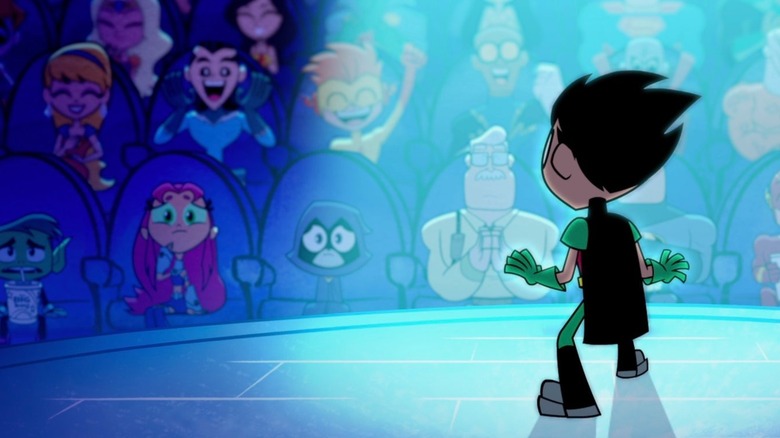Who Owns Cartoon Network?
Initially launched as a cable channel where you could watch old animation, Cartoon Network quickly became the destination for brand-new cartoons — and some of the best ones around — for multiple generations of kids and animation fans. The network did a great job of growing with its audiences all the way to adulthood while simultaneously and continuously catering to the latest batches of youngsters. Cartoon Network simply seems like one of those channels that has always been and will always be there. But it might not be as old as you think, nor as invincible as it seems.
The origins of Cartoon Network are a bit easier to parse out than many cable channels by virtue of who founded it and why. However, like just about everything over the last 30 years, trying to keep up with who owns the channel from one day to the next has been a bit more difficult. And, unfortunately, most of the headlines related to Cartoon Network in recent years have been bad news, with acquisitions and mergers leading to content purges and entire arms of the brand being shut down. So who owns Cartoon Network right now, and is it even still a thing? Let's dig into it.
Ted Turner acquires several animation libraries in the 1980s
It's not a name that you hear much these days, but back in the 1980s and '90s, everyone knew who Ted Turner was. He was integral in cable television's penetration of U.S. households, launching the channels CNN, TBS, and TNT. Turner was also in the news seemingly every other week for his acquisition of various media companies and/or their libraries. He would then create channels to show the content from those acquisitions. His ownership of old film libraries is what led to the creation of Turner Classic Movies (TCM) in the 1990s, for instance.
Among the many things that Turner Entertainment owned going into the '90s was animation — and lots of it. Looney Tunes, Tom & Jerry, Popeye, The Flintstones, and Scooby-Doo were just a few of the iconic animated properties that were under the Turner umbrella, and it all needed somewhere to go. So, just like he did with TCM, Turner decided that the obvious choice was to start another channel, filling it with all of the cartoons he now owned.
Turner Broadcasting launches Cartoon Network on October 1, 1992
After acquiring much of the cartoon libraries of Warner Bros. and MGM, among others, 1991 saw Turner make one of his biggest purchases yet when he outbid several other companies for ownership of the Hanna-Barbera animation library. He paid $320 million, which would be about $740 million in 2025 adjusted for inflation. This move added dozens of legendary cartoons and characters to the media magnate's stable, meaning that he had more than enough animation under his purview to build an entire channel around it.
The Cartoon Network, Inc. was founded in March 1992, and Cartoon Network became Turner's fifth channel when it launched on October 1, 1992. Just as CNN was the first-ever 24-hour news channel, Cartoon Network was the first 24-hour animation channel. For its first year or so of existence, the network's programming consisted entirely of existing cartoon series and shorts — but it wouldn't stay that way for long.
Cartoon Network begins creating original content
You can only survive on old Bugs Bunny, Scooby-Doo, and Smurfs cartoons for so long, a fact that Cartoon Network realized pretty early in its existence. While other cable channels took several years before they had the resources to offer original programming, Cartoon Network only needed one and a half. In April 1994, the channel debuted its first original series — the animated late-night talk show "Space Ghost Coast to Coast." But while it was the network's first stab at original programming, it didn't launch a full-on initiative of new series.
Over the next few years, "Space Ghost Coast to Coast" would experiment with various types of content, but it didn't actually debut a fully original (Space Ghost had been an existing Hanna-Barbera character dating back to the 1960s) half-hour series until 1996, with the debut of "Dexter's Laboratory."
Once "Dexter's Lab" became Cartoon Network's top-rated show, it was clear that the channel's future was in original programming. By the end of the decade, Cartoon Network would add "Johnny Bravo," "Cow and Chicken," "Ed, Edd n Eddy," "Courage the Cowardly Dog," and "The Powerpuff Girls" to its lineup of original series.
Warner Bros. gets its animation back when Turner Broadcasting merges with Time Warner
Cartoon Network didn't end up remaining under the sole leadership of Turner Broadcasting for very long. 1996 brought the first of what would end up being several mergers and/or acquisitions during the channel's existence when Turner Broadcasting merged with Time Warner. The latter company itself was the result of the previous merger between Warner Communications and Time, Inc., lest anyone think that all the recent mergers and acquisitions of major media corporations are anything new.
One of the results of the Turner-Time Warner merger was that all of that Warner Bros. animation that Turner had previously bought from Warner was now back under its original parent company's umbrella. And although Warner has continued to be acquired by or merged with other companies since then, its portfolio — animated and otherwise — has never again left its grasp since it regained access to it via the Turner-Time Warner merger.
It's also worth mentioning that 1998 is the year that CartoonNetwork.com launched. It was initially a site for mostly just information about its shows and characters as well as some very basic web games, but it eventually became a place for people to watch both current and archived Cartoon Network shows.
Cartoon Network continues to branch out with programming blocks like Adult Swim and Toonami
A common problem for channels aimed at a younger audience is how to retain those viewers as they get older. Sure, you can perpetually court the latest batch of kids, but there's no guarantee that the next generation will fall in love with your programming at the same rate or in the same way the previous one did. There's also the fact that completely ignoring the highly coveted teen and young adult demo is a risky proposition for any consumer business.
Cartoon Network's first attempt to aim for older kids was its Toonami programming block, which launched in March 1997. Toonami was focused on more action-oriented cartoons, initially debuting with existing classics like "Voltron" and "Thundercats." In 2003, the focus shifted to more heavily favor anime as it added "Dragon Ball," "Sailor Moon," and other legacy anime series to the block.
September 2001 also saw the launch of Adult Swim, which replaced the network's previous tradition of late-night airings of classic cartoons — most of which had moved to spin-off channel Boomerang at that point — and instead devoted its weeknight primetime to early morning hours to much edgier and more mature fare aimed more specifically at older teens and adults. In addition to originals like "Aqua Teen Hunger Force" and "The Venture Bros." — the latter of which remains one of the best Adult Swim shows of all time — Adult Swim also became the home for reruns of primetime animated series that had been canceled by other networks. In fact, one of the interesting facts about Adult Swim is that its "Family Guy" reruns famously pulled in such high ratings that it inspired Fox to bring the series back after it had been canceled several years earlier.
Time Warner acquires AT&T, making Cartoon Network part of WarnerMedia
After 1996, Cartoon Network went 20 years without any major corporate shake-ups, the longest stretch of time the channel ever got to enjoy some stability in that arena. That ended in 2016, when AT&T acquired Time Warner — and with it, everything that Time Warner owned or co-owned. The acquisitions were placed under a new sub-header under AT&T called WarnerMedia, including The Cartoon Network, Inc.
Three years later, in 2019, AT&T reorganized all of its assets, dissolving Turner Broadcasting entirely and redistributing the previously Turner-owned channels across various new business units. Cartoon Network, Boomerang, and TCM all got placed into a business unit called Global Kids, Young Adults and Classic. The unit not only oversees those channels but is also directly in charge of overseeing the associated animation libraries that were previously acquired by Turner.
Cartoon Network becomes a subsidiary of Warner Bros. Discovery and enters its troubled streaming era
In 2021, Cartoon Network found itself part of another major merger. This time, it was between AT&T and Discovery, Inc., which at that point owned not only its namesake channel but also TLC, HGTV, Food Network, Animal Planet, and Science Channel, among other brands. Streaming service HBO Max had just launched the previous year, which featured not only HBO content but anything that fell under the new Warner Bros. Discovery umbrella — of which The Cartoon Network, Inc. was now a subsidiary, where it remains as of this writing.
To have programming from not only HBO but also the many channels previously owned by Discovery, Inc. and WarnerMedia all contained within a single streaming service initially sounded like a dream come true. But the glorious future of entire-brand libraries available on demand began to show cracks in 2022, when several major streaming services began to purge content from their libraries. Licensed content was one thing — those programs had always come and gone from streaming services as deals were made and expired. But it was assumed that any content that was outright owned by, if not specifically created for, a given streaming service would live on that service indefinitely. But, as we found out, nothing could be further from the truth.
Content purges and the shutting down of CartoonNetwork.com
Cartoon Network was hit especially hard by the aforementioned content purges, with large chunks of its shows getting pulled from Max in 2022. And it seems to be getting worse rather than better, with more and more disappearing as time has gone on. If reports are to be believed, after the next batch of shows slated for the chopping block are removed, "Courage the Cowardly Dog" and "The Powerpuff Girls" will be the only remaining Cartoon Network originals from the 1990s and 2000s to remain available on Max.
What's more, even shows that have debuted in the last 15 years — including those related to Cartoon Network properties created specifically for Max — have experienced an ever-shrinking presence on the platform. There are many underrated Cartoon Network shows that you need to watch, but good luck finding them.
Perhaps worst of all is that, as a result of all these cost-cutting purges, the CartoonNetwork.com website was shut down entirely in August 2024 without warning. And with it, tons of archived legacy content, including stuff that was never even on Max at all, disappeared from the internet, presumably forever. Typing in the old CartoonNetwork.com URL now just redirects you to the Cartoon Network hub on Max — such as it is.
Was Cartoon Network shut down?
Considering everything that has happened to the Cartoon Network brand of late, it may seem easy to assume that Cartoon Network itself has also been shut down. In fact, buzz to that effect spread across social media in mid-2024 as a result of CartoonNetwork.com going offline unannounced combined with headline after headline announcing the latest batch of Cartoon Network shows to be removed from Max.
For what it's worth, as of the publication of this article, Cartoon Network remains both an active brand and cable channel. Remarkably, Boomerang is also still an active channel on many cable packages. Its standalone streaming service was shut down at around the same time that CartoonNetwork.com was, however, further adding to the confusion over whether the two brands were going away entirely. The future for Cartoon Network as a brand may be uncertain, and a lot of its programming may no longer be accessible to fans, but it hasn't been shut down. Not yet, anyway.
